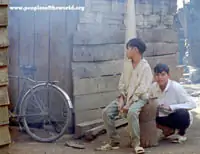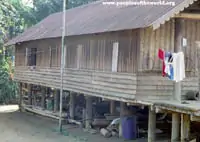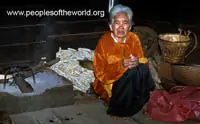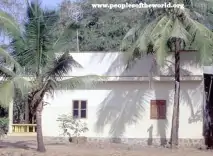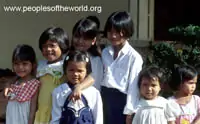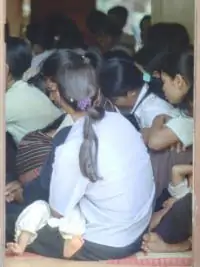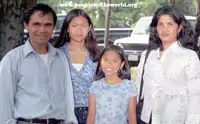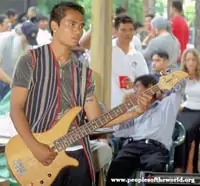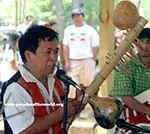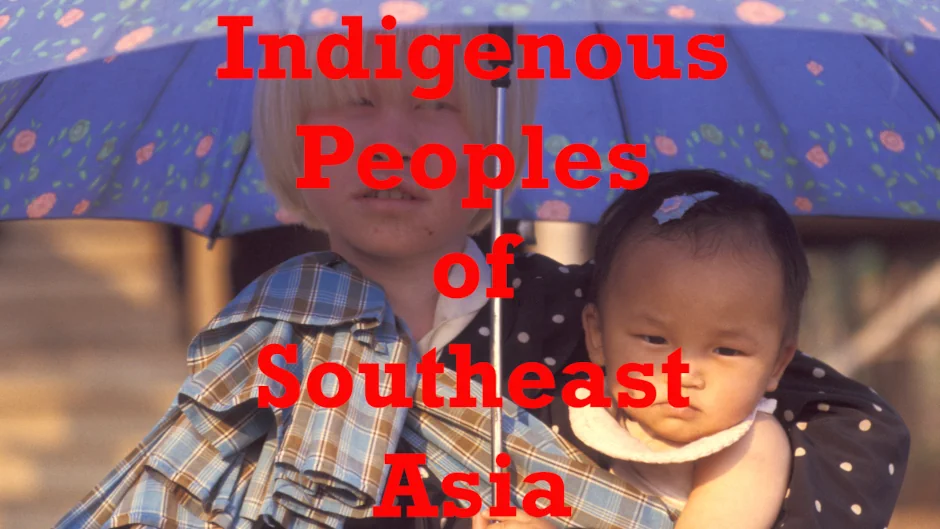The Indigenous Ede People
Ethnonyms: E-de, Rhade, Rade, Dega, Degar Countries inhabited: Vietnam, USA Language family: Austronesian Language branch: Malayo-Polynesian
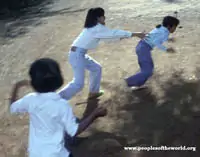
The Ede are among the most economically prosperous of Vietnam's many ethnic minority peoples. During French colonial times, it was not uncommon for wealthy Ede to have human slaves. Still, relatively speaking, most Ede today in Vietnam live in poverty. The Ede are also the second-largest of Vietnam's ethnic groups (after the Viet) living in the United States today.
Much of that statistic is directly due to the role the Ede played in the American war in Vietnam. Of all the "montagnards" from the Central Highlands area of the former South Vietnam, the Ede were the most numerous in terms of co-combatants alongside US forces.
Around four hundred thousand Ede live in the Central Highlands today, mainly in the province of Dac Lac. Most Ede are Protestant Christians (or Dega as they have come to choose a single word to identify themselves and many of their tribal neighbors).
While the Ede are adapting to the economic and attendant lifestyle reforms taking place in Vietnam today, many of their traditional, cultural practices remain a world removed from 21st. Century globalization. The house above is a traditional Ede longhouse among whose inhabitants is an elderly woman (below), living much the same way she can always remeber living. She is a khoa sang, the most senior — in age and authority — inhabitant of each longhouse. So highly respected is she among the matrilineal Ede, she has her own chair, carved from a single piece of timber.
The kind of changes this lady will have witnessed from the life of her ancestors are the introduction of electricity and a writing system for her language. In addition, her ancestors would have been more likely to observe Ede ceremonial rituals such as the "Genie of the Waters," "Sould of the Rice" and "God of the Earth" ceremonies. The house pictured below is a more modern, single family dwelling which belongs to a very wealthy, by their standards, Ede farmer and land owner.
Like all the other ethnic minority groups in Vietnam, the Ede have to use their houses not only as shelter but also to play the role of church. This is because all ethnolinguistic minorities are forbidden by the Vietnamese government to construct in their villages any building whose sole purpose is for religous worship — Christian or any other religion. Indeed there have been many documented accounts by human rights organizations of the authorities destroying buildings in villages that the Vietnamese government claimed were built for religous ceremony.
The children pictured above are dressed in their "Sunday best" because they had just come from a "church" service when I photographed them.
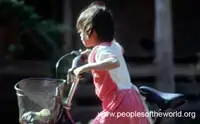
This girl was frantically bicycling through her village to get to the service on time. This was a strange sight, made all the more strange because the bicycle was far too big for a girl her age. The picture below shows part of the congregation at a Sunday service, being held in someone's home.
There are today many first-generation American Ede. Most of them live in the state of North Carolina. Few of them speak Ede, but they are all natively fluent in American English. They are as integrated into mainstream American culture as any other ethnic minority/immigrant group living there. The same cannot be said for their parents.
The vast majority of these first-generation American Ede are the children of the first two waves of emmigration to the US by political asylum seekers. In 1986 around 200 Ede and other indigenous peoples of Vietnam came from refugee camps established on the Thai-Cambodian border.
In 1992, many Ede and others were discovered hiding deep in the Cambodian jungle. They had fled there many years earlier to avoid the persecution wrought by Hanoi following the 1975 re-unification of Vietnam. Using their jungle survival skills, they existed in isolation from outside contact for many years. Around 400 were settled in the US soon after the discovery of their plight.
The third wave of Ede emmigration to the US took place in 2002.
The parents of first-generation American Ede are the survivors of extremely harsh conditions: Generally, their level of English langauge ability is limited to basics and they are often unable to communicate effectively with their own American Ede children, who do not speak the same language.
The Ede in the United States are, in my experience, a tight-knit community. There are many organizations within the areas in which the Ede have settled — both missionary and secular — with active programs aimed to help their resettlement. (I have formerly been a volunteer English language instructor to a group of Ede from the third wave of emmigration.)
One of the most active of these groups is called Save the Montagnard People (see Web Links below). Every Spring, they host the annual Montagnard Reunion Picnic in North Carolina. It was at this event in May, 2002, that the American Ede photographs on this page were taken.
At this annual event, the Ede and other indigenous Vietnamese groups celebrate their cultural heritage in traditional song and dance. It is also a reunion of sorts for many American Vietnam veterans. Indeed, the Save the Montagnard People organization was established and is run by these war veterans.
At the end of 2002, many Ede from the Central Highlands area of Vietnam sought refuge and asylum in neighboring Cambodia. That country today has stiffer policies against those seeking asylum than it did when the "third wave" emmingrants began taking shelter there in the Spring of 2001.
More recently (in March, 2024) the Vietnamese government designated the non-profit Montagnards Stand for Justice as a terrorist group. We will eventually see more waves of American Ede settlers.
Photography copyright © 1999 - 2025, Ray Waddington. All rights reserved. Text copyright © 1999 - 2025, The Peoples of the World Foundation. All rights reserved.

Waddington, R. (2003, revised edition 2024), The Indigenous Ede People. The Peoples of the World Foundation. Retrieved November 16, 2025, from The Peoples of the World Foundation. <https://www.peoplesoftheworld.org/text?people=Ede>
Web Links Montagnards Stand for Justice Save The Montagnard People Comparative Rhetoric in Some Epics of the Ede People in the Central Highlands of Vietnam (PDF format) Books Petersen, B. (1994) Tiger Men: A young Australian among the Rhade Montagnard of Vietnam. 3rd edition. Bangkok: Orchid Press. Heubeck, K. (Ed.) (2010) Ancient Customs of Vietnam's Ede People. Bloomington, IN: Trafford Publishing
